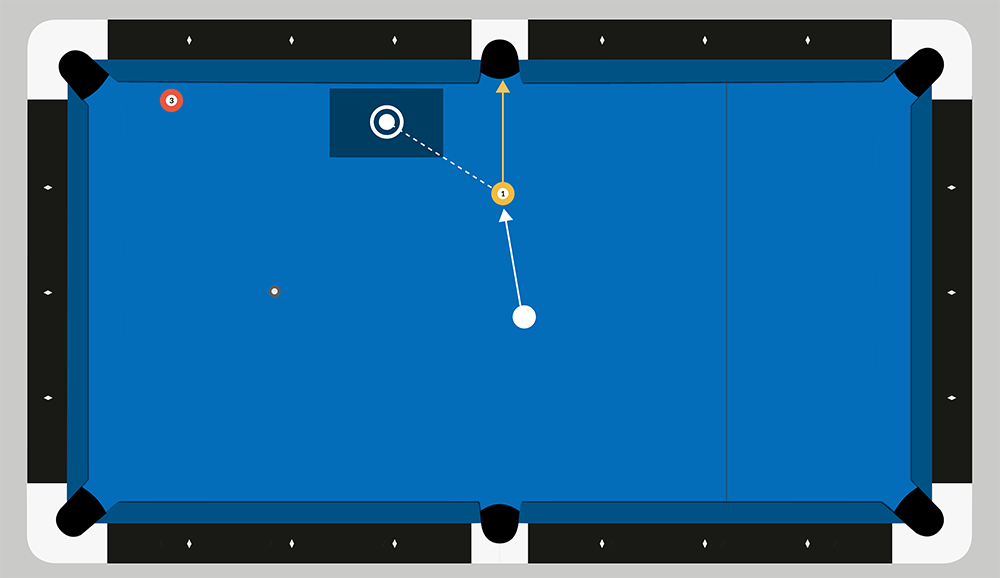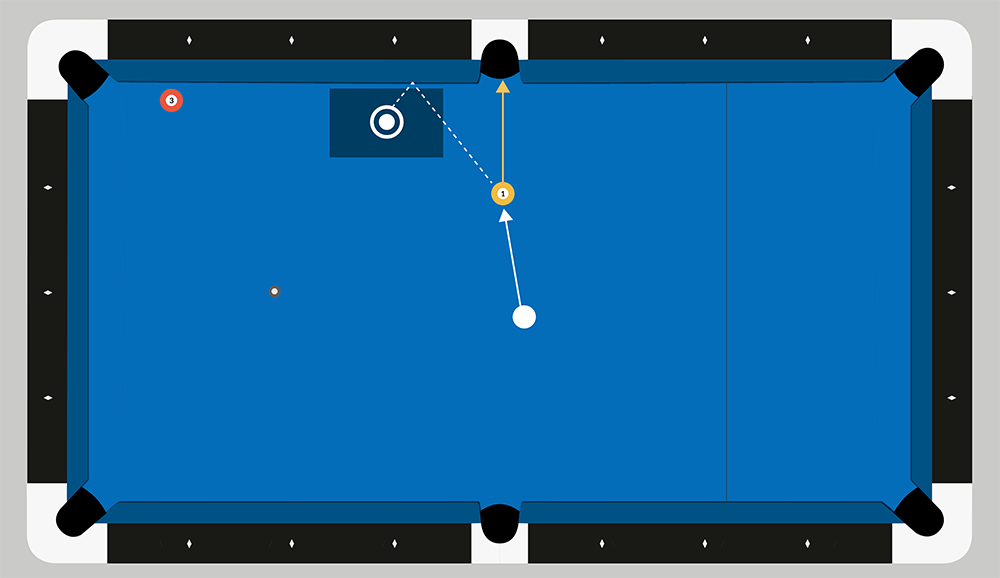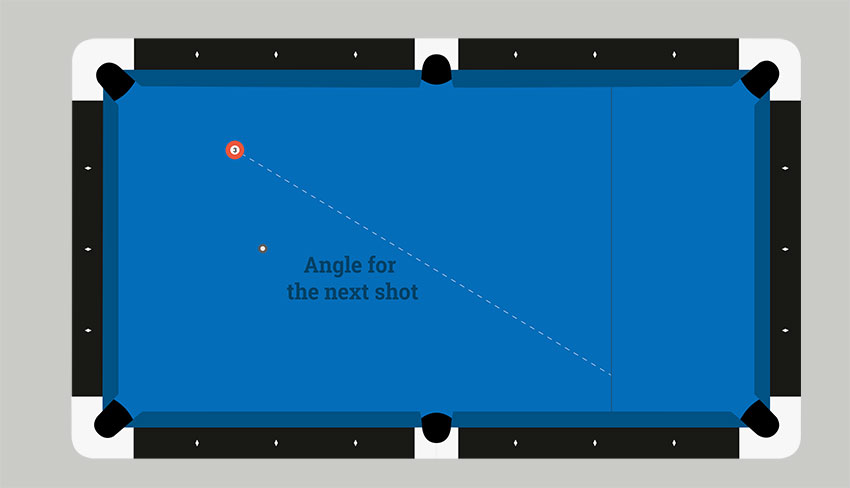Speed control can be difficult when only using draw or follow in order to get pinpoint position. Fortunately pool tables come with tools to make it easier to play position than you would think. These tool are called rails! Rails make it easier to play position by giving you a larger area to play for, changing the angle of the cue ball path, and helping control the speed of the cue ball.
Players use one, two, or three rails to get perfect position, and it is not uncommon to use more rails depending on the shot. Depending on the situation you should change the number of rails that you use in order to get good position. Before we talk about how many rails to use, we should discuss the strategy involved in getting better position.
More space to play for
This will seem odd initially, but using the rails can actually give you more room to play for on the table. Using a rail gives you a greater margin for error. If you look at the image below using pinpoint position would be difficult without using a rail. However, when we use the rail for position we essentially have double the amount of space than we did before. The cue ball can go back and forth between the rail and it is still in the range we are aiming for giving us an advantage when playing position.

In the example above, the cue ball hits no rails and must stop at the precise position in the target area in order to have a good shot on the two ball. This can be difficult because it is difficult to get a feel for the speed of a shot without hitting a rail.

Here we use a rail to get position with the cue ball and there are two things that make this easier. The first is that rails help slow the cue ball down so it is easier to control the shot. The other factor is that if you compare the top and bottom paths of the cue ball, the example that uses a rail has the cue ball path within the target area much longer than the example that uses a rail. This gives more room for error making it more likely that you’ll get good position on the next shot.
Change angle for larger margin of error
A common principle to aim for in pool is to find ways to move the cue ball into the line of the shot you need to be on instead of across it. Playing across the line of a shot lowers the margin for error and the amount of room you have to play for is small. So you should try to use a rail to go into the shot, even if it means using two rails instead of one, it is better to move the cue ball into the line of the shot you want to be so you have a larger area to move the cue ball in. Doing this keeps the cue ball in line, makes it easy to get close to the object ball, and drastically increases the margin for error.





Here the amount of space we have to get on the correct angle line is small because you are coming across the line of the position you want to play for. This means you need to have perfect position in order to come up with the right angle for the next shot.




Playing a shot this way, into the angle, gives you more room for error in terms of speed control. Once the cue ball gets past the object ball after hitting a rail, it is going into the aiming line so its always in the right position. You should always try to play for a specific location on the table so you are not too far away from the object ball, but if you happen to over run your position point you will have a harder shot. However you will still have the correct angle.
